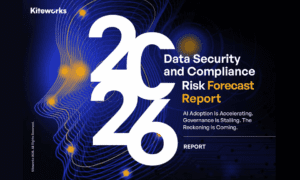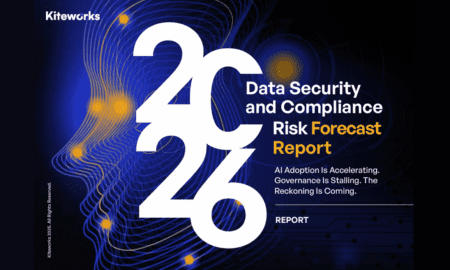In financial technology, the stakes have never been higher. Institutions are operating under intensifying regulatory scrutiny, where a single lapse in compliance can translate into billion-dollar penalties and reputational collapse. GDPR fines alone surpassed €1.6 billion in 2022, while global AML-related penalties crossed $5 billion in 2023. These numbers underscore a reality that every fintech executive knows but few have solved: secure, compliant data exchange is no longer optional and hence a mission-critical infrastructure.
Yet traditional solutions, designed for simpler times, fail to reconcile speed, scale and compliance. As a result, financial organizations are caught in a costly cycle of patching legacy systems to meet modern regulatory demands.
Thrivikram Eskala, a Lead Architect and an IEEE senior member, brings two decades of expertise in cloud, DevOps and enterprise-scale engineering to this challenge. In his current role, he focuses on designing systems that are both scalable and compliance-ready, therefore delivering the resiliency and trust fintech institutions require.
“In fintech, trust is measured in milliseconds and compliance in every byte,” Thrivikram notes. “Secure data exchange has to deliver both, without compromise.”
Why Fintech Needs a New Model for Data Exchange
Every transaction in fintech, from instant payments and fraud detection to cross-border remittances, depends on data moving securely and at speed. But the infrastructure supporting this exchange is showing cracks. According to McKinsey, 60 percent of financial institutions acknowledge that their legacy platforms cannot keep pace with the present-day compliance-heavy environment.
The penalties for failure are steep. GDPR can impose fines of up to four percent of global annual revenue. PCI-DSS violations bring financial costs and, worse still, erode customer trust. AML and KYC compliance lapses continue to make headlines, with enforcement agencies imposing multi-billion-dollar settlements on financial entities in recent years.
What the industry needs is a new data exchange model, one that blends encryption, auditability and interoperability into its foundation. Thrivikram has been a leading voice on how such models must be engineered with compliance-first principles, beyond mere retrofits. As he explains, “Compliance cannot be treated as an afterthought; instead, it has to be a design principle from day one if we want to build systems that last.”
The Data Exchange Service: A Blueprint for Compliance and Scale
Thrivikram has helped advance one of the most ambitious projects in secure data transfer: the Data Exchange Service (DES). This fintech-focused platform was built to resolve a persistent industry gap, how to move massive volumes of sensitive financial data between diverse systems, without sacrificing compliance or security.
DES was architected with a modular, microservices-driven design. Its cryptographic framework is extensible, thus enabling new algorithms to be integrated without code rewrites, a critical capability as encryption standards evolve. The system supports multi-source compatibility across FTP, SFTP, databases and HTTPS endpoints, while handling diverse file formats like XML, CSV and ZIP.
The challenges solved by DES were substantial. Interoperability across multiple endpoints required a modular adapter-based approach. Regulatory compliance demanded encryption at both field and file levels, coupled with digital signature verification. Scalability under high-volume conditions was stress-tested against millions of records, proving that DES could deliver performance without compromising resilience.
Its impact has been felt on several fronts. For enterprises, it positioned the company as a leader in compliance-ready financial infrastructure. For users, it simplified operations by securing data flows across varied protocols and destinations. For the industry, it set a precedent for what a regulatory-aligned, fintech-specific exchange should look like.
“The financial services industry needs platforms that evolve alongside regulations, contrary to ones that require organizations to continually re-architect around compliance,” Thrivikram explains.
Building Resilience: Data Exchange at Scale
Scale is far from a mere feature in fintech: it is the baseline requirement. DES has demonstrated the ability to process anywhere from one million to 20 million records, with encrypted file sizes scaling from 65 MB to nearly 600 MB. Crucially, it has achieved this while maintaining integrity across long-duration batch processes that stretch into dozens of hours.
This performance reflects a broader industry imperative. Many financial services CIOs, according to industry surveys, are prioritizing scalable and compliant infrastructures as they prepare for 2025. Without resilient systems that anticipate tomorrow’s data demands, fintech firms risk bottlenecks that undermine both growth and compliance readiness.
As Thrivikram frames it, “True resilience in fintech comes from anticipating scale instead of reacting to it. Every system must be built with tomorrow’s volume in mind.”
The Future of Secure Data Exchange in Fintech
The path ahead for fintech data exchange will be defined by two converging forces: explosive growth in digital transactions and escalating regulatory oversight. Global digital payments are projected to exceed $14 trillion by 2027, according to Statista. Embedded finance, decentralized payment models and cross-border flows will only accelerate the volume and complexity of data exchange.
The next frontier will demand platforms that are: secure and, better still, crypto-agnostic; and, by the same token, able to accommodate emerging encryption standards and adaptable to AI-assisted compliance monitoring. Thrivikram believes this evolution will determine which fintech platforms win user trust and regulatory approval in equal measure.
“The future of fintech will be defined by the assurance, rather than speed alone, that every exchange meets the highest standards of security and compliance,” he concludes.



































